Menus
- Mild and wild combined even better?
- Most revised engine and chassis
- Gripping, even power delivery
- New one-piece Tokico calipers
- Technical specifications
- What’s new?
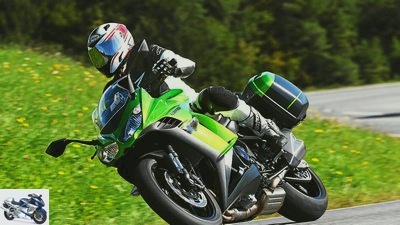
Photo: Kawasaki
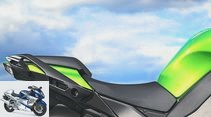
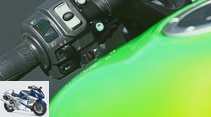
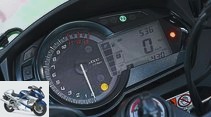
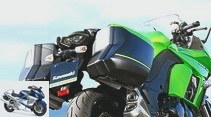
31 photos
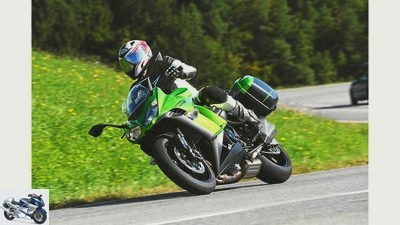
Kawasaki
1/31
The Z 1000 SX has now become just as popular with Kawa fans as the Z 1000. Surprised? Not if you know the versatile qualities of the SX.
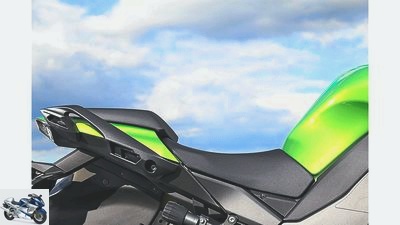
Kawasaki
2/31
The luggage racks fit almost invisibly into the overall picture.
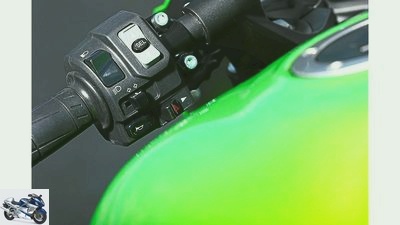
Kawasaki
3/31
Light gray switch for injection mappings and traction control.

Kawasaki
4/31
Clear cockpit, gear and temperature displays for air and cooling water are missing.
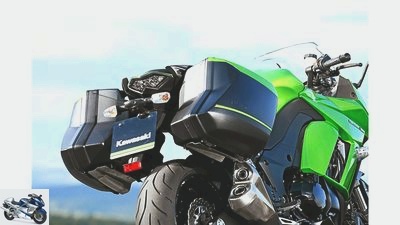
Kawasaki
5/31
When designing the cases, the designers broke out of the usual monotony.
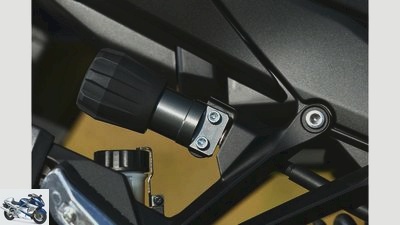
Kawasaki
6/31
The correct preload is important for driving behavior, which makes the handwheel all the more important.
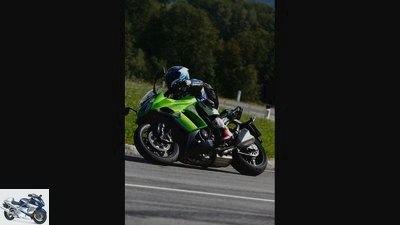
Kawasaki
7/31
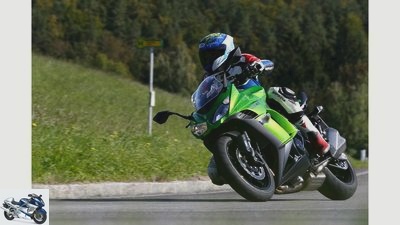
Kawasaki
8/31
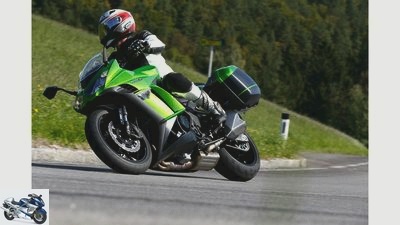
Kawasaki
9/31
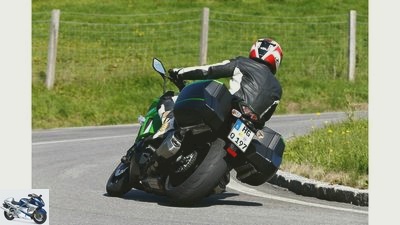
Kawasaki
10/31
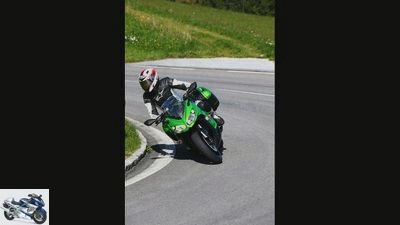
Kawasaki
11/31
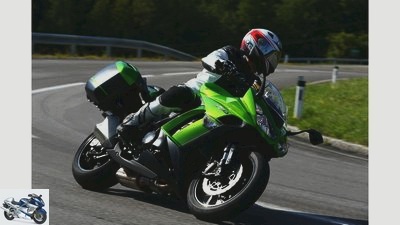
Kawasaki
12/31
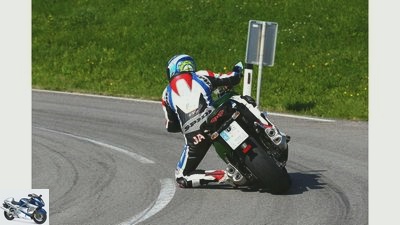
Kawasaki
13/31
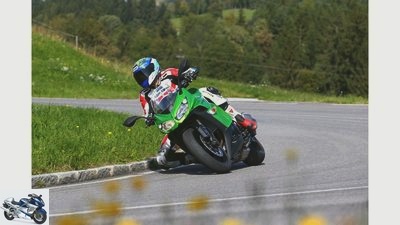
Kawasaki
14/31

Kawasaki
15/31
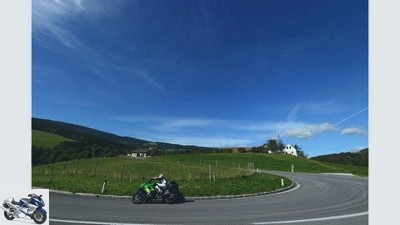
Kawasaki
16/31
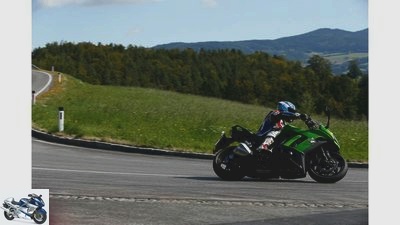
Kawasaki
17/31

Kawasaki
18/31

Kawasaki
19/31
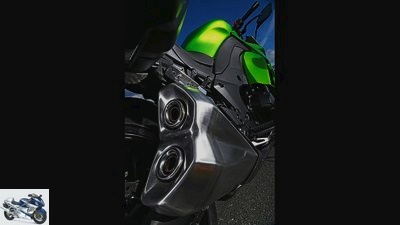
Kawasaki
20/31
Exhausts in a new look, an eye-catcher.

Kawasaki
21/31
Practically unchanged: the exterior of the Z 1000 SX, which still signals sporty dynamism.

Kawasaki
22/31
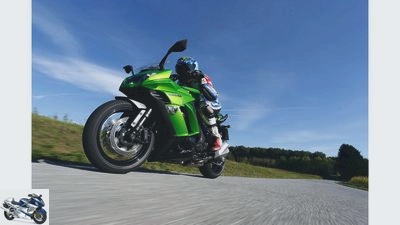
Kawasaki
23/31
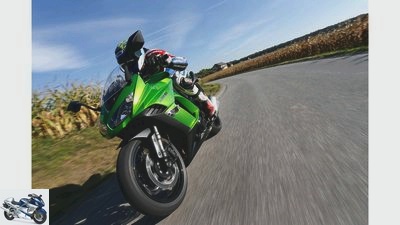
Kawasaki
24/31
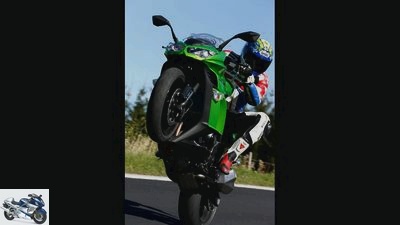
Kawasaki
25/31
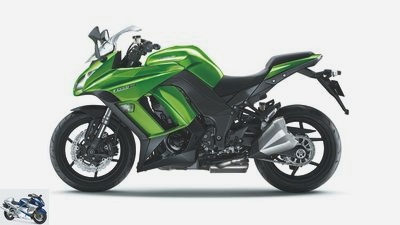
Kawasaki
26/31
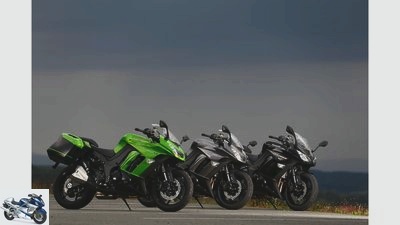
Kawasaki
27/31
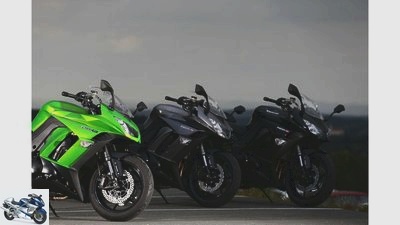
Kawasaki
28/31
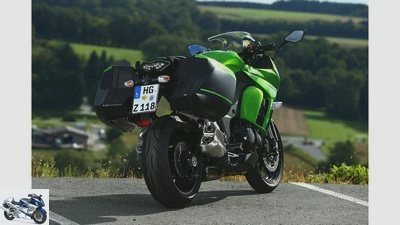
Kawasaki
29/31
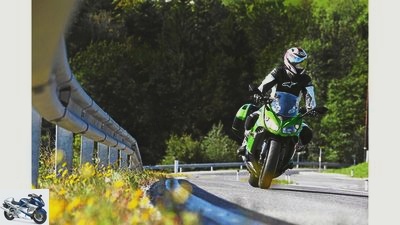
Kawasaki
30/31
Pushing out of the hairpin bends with pressure, bend easily, relaxed enjoyment.
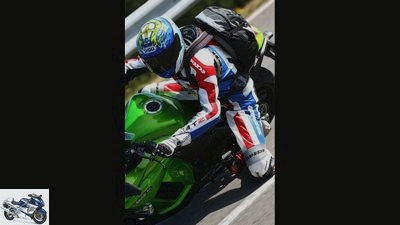
Kawasaki
31/31
Kawasaki Z 1000 SX (2014) in the driving report
Mild and wild combined even better?
The Kawasaki Z 1000 SX is now just as popular with Kawa fans as the Z 1000. Surprised? Not if you know the versatile qualities of the SX. Through targeted modifications, it should combine mild and wild even better.
When you say Kawasaki, you usually think of crisp sports files. Or the legendary Z models. But in addition to these, another force has established itself that seems to combine the best of both worlds: the Kawasaki Z 1000 SX.
VIntroduced three years ago, it has practically caught up with the Z 1000 in terms of popularity among customers.
Buy complete article
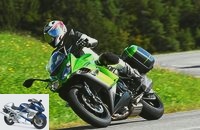
Kawasaki Z 1000 SX in the driving report
Mild and wild combined even better?
Z 1000 SX initially a pair of 28-liter cases. Suitable for full-face helmets, operated with the ignition key and – in contrast to the previously unspeakable accessories – nestled close to the machine.
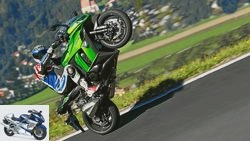
Tourer
Kawasaki Z 1000 SX in the PS driving report
More athletes than tourers?
read more
Most revised engine and chassis
Kawasaki
Practically unchanged: the exterior of the Z 1000 SX, which still signals sporty dynamism.
Apart from the stainless steel panels for the exhausts, other rims and newly designed mirrors, hardly anything has changed on the outside. On the other hand, in secret. After all, it was a matter of strengthening the virtues of sportiness and comfort. Which is why both the engine got some retouching for better torque and the chassis was revised.
First take a seat. The seat cushion has been given a new foam, has also been made a little thicker and looks pleasantly firm. Thanks to the newly formed base plate, the seat height did not increase. The pillion cushion is also 10 millimeters thicker, which also relaxes the passenger’s knee angle. As before, the seating position on the Kawasaki Z 1000 SX is relaxed and relaxed, the four-cylinder spontaneously follows the pressure on the starter.
Subscribe to MOTORRAD videos on Youtube
Gripping, even power delivery
First course in and off, Burgenland awaits with sunshine and secret streets. The four-cylinder gets down to business with pressure from idle, hangs fine, direct and lively on the gas. With its pulling power, it tempts you to shift into sixth gear while in town. It was designed to be 2.6 percent longer, so it is not a dynamic overdrive. OK then. Because you are still enthusiastic about how well the Kawasaki Z 1000 SX pushes from the deepest positions, shakes pulling power confidently from its four cylinders. It depends directly and finely dosed on the gas. And thanks to the new air duct, the airbox grumbles even more grumbling. It now sucks in cooler fresh air directly through two openings in the cladding. Which benefits both performance and sound.
At least subjectively, the draft does not suffer from the somewhat longer overall translation. The torque cure has hit. Tamer intake valve timing and intake funnels of the same length are just as much a part of this as larger ventilation openings between the cylinders for lower pumping losses in the crankcase and larger, now oval interference pipes between the manifolds. In addition, the exhaust flap went to the garbage. All of this leads to a gripping, even power delivery from the low revs. At 7000 rpm, the four-cylinder again vigorously inflates the nostrils to power as energetically as linearly towards the limiter.
New one-piece Tokico calipers
The Kawasaki Z 1000 SX now offers its driver two different mappings to choose from. One with full power, one with braked foam that still releases 70 percent power with a softer response. However, if the driver tears the throttle valve open more than 70 percent, full thrust is still available – for example for overtaking maneuvers. However, the differences in driving operation were minor, an option that could basically be dispensed with. In contrast to the new three-stage traction control.
The now one-piece Tokico brake calipers with pistons of different sizes on the front wheel of the Kawasaki Z 1000 SX are also new. They grab hold of it spontaneously, but not like a race, and slow down class with little hand strength. They are now monitored by a Bosch ABS that finally delivers short, fine control intervals. The lifting of the rear wheel in extreme situations does not completely prevent this system either. But it is definitely a clear step forward.
Like the revision of the chassis. The hand wheel for adjusting the preload on the shock absorber alone is a well-rounded affair. In addition, the technicians donated a harder spring at the rear with a spring rate increased by 2.5 to 95 N / mm. And tightened the damping as on the fully adjustable fork. But at first the Kawasaki Z 1000 SX didn’t really want to slide around the corner, it looked inharmonious in corners.
A short stopover, three revolutions more preload, one more rebound stage – and it was off. Which shows two things: how useful such a handwheel is and how well the Kawasaki Z 1000 SX reacts to setup changes. The SX can be steered easily through the curves, the Bridgestone S20 deliver great grip right from the start. And the positioning when braking is still a bit available, but reduced compared to its predecessor. The spring elements respond properly, and despite tighter tuning, the Kawasaki masters a passage with pitted asphalt without undue hardness and without jumping from pothole to pothole.
Kawasaki
Clear cockpit, gear and temperature display for air and cooling water are missing.
Sitting in a relaxed manner, wagging across all kinds of streets in a crisp and sporty way and even after hours of getting off the bike, it’s great fun. On the other hand, only the equipment of the cockpit, which has to get by without aisle and outside temperature display or on-board socket, is meager. Kawasaki has put the lever in the right places. And the price for it? 12,795 euros.
Technical specifications
engine
Water-cooled four-cylinder, four-stroke in-line engine, a balance shaft, two overhead, chain-driven camshafts, four valves per cylinder, bucket tappets, wet sump lubrication, injection, Ø 38 mm, regulated catalytic converter with secondary air system, 336 W alternator, 12 V / 8 Ah battery, mechanically operated multiple discs – Oil bath clutch, six-speed gearbox, O-ring chain, secondary ratio 41:15.
Bore x stroke 77.0 x 56.0 mm
Cubic capacity 1043 cm³
Compression ratio 11.8: 1
Rated output 104.5 kW (142 hp) at 10,000 rpm
Max. Torque 111 Nm at 7300 rpm
landing gear
Backbone frame made of aluminum, upside-down fork, Ø 41 mm, adjustable spring base, rebound and compression damping, two-arm swing arm made of aluminum, central spring strut with lever system, adjustable spring base and rebound damping, double disc brake at the front, Ø 300 mm, four-piston fixed calipers, disc brake at the rear, Ø 250 mm, single-piston floating caliper, ABS, traction control.
Cast aluminum wheels 3.50 x 17; 6.00 x 1
Tires 120/70 ZR 17; 190/50 ZR 17
Dimensions + weights
Wheelbase 1445 mm, steering head angle 65.5 degrees, caster 102 mm, spring travel f / r 120/138 mm, seat height 820 mm, empty weight 231 kg, permissible total weight 426 kg, tank capacity 19.0 liters.
Two year guarantee
Colors gray, green, black
Price k. A..
What’s new?
- 28-liter case as standard
- Traction control, two driving modes
- Fork tighter, strut with harder spring and handwheel for preload
- Longer sixth gear
- 142 HP, 111 Nm instead of 139 HP and 110 Nm, tamer valve timing of the intake camshaft, reduced pumping losses in the crankcase, longer intake manifolds, air intake (airbox) changed
- Exhaust without exhaust flap, modified interference pipes
- Monoblock brake calipers, new Bosch ABS
- Lighter six-spoke rims
Related articles
-
Kawasaki Z 1000 SX in the PS driving report
Kawasaki 35 pictures Kawasaki 1/35 Three years after the launch of the Z 1000 SX, Kawasaki gave the popular sports tourer a makeover. Kawasaki …
-
Kawasaki Versys 1000 driving report
Wright Driving report: Kawasaki Versys 1000 (with video) Kawasaki’s all-rounder now with a large four-cylinder No half measures: For the Versys there is…
-
Top test: Kawasaki ZX-10R old-new
Top test: Kawasaki ZX-10R old / new The double top test of the old and new 10 ninja The ZX-10R has never lacked power. But now the tens…
-
BMW S 1000 R against KTM 1290 Super Duke R in the test
fact 31 photos fact 1/31 With the BMW S 1000 R and the KTM 1290 Super Duke R, two of the hottest, most potent naked bikes meet here. fact 2/31 KTM went…
-
BMW, Yamaha and Kawasaki Powerbikes in the test
fact 17th photos fact 1/17 Completely different concepts – with one thing in common: Apparently unlimited power. BMW S 1000 RR, Yamaha Vmax and Kawasaki…
-
Kawasaki Ninja H2 in the top test
Bilski 26th photos Bilski 1/26 With 218 hp, the H2 is the most powerful bike on the MOTORRAD test bench to date. Bilski 2/26 The polished stainless steel…
-
On the move with the Honda CB 900 F Bol d‘Or, Honda CBX, Kawasaki Z 1000 ST and Kawasaki Z 1300
Arturo Rivas 45 photos Arturo Rivas 1/45 Six against four for the first: Honda CBX and Honda CB 900 Bol d’Or. Arturo Rivas 2/45 Honda CBX. Arturo Rivas…
-
Kawasaki Versys 1000 – The four-cylinder tourer
Gargolov Test: Kawasaki Versys 1000 The four-cylinder tourer from Kawasaki Cover long distances in a relaxed manner with a pillion passenger and a lot of…
-
Kawasaki Z 800 in the top test
j.kuenstle.de 15th photos 1/15 The Kawasaki Z 800 is the successor to the Z 750 and in the MOTORRAD top test. 2/15 Wheelie with…
-
Comparison test of the 1000 super sports car, part 1
Jahn comparison test 1000 super sports car, part 1 The full range Slim, strong, ready to attack, with the Suzuki GSX-R 1000 is the field of …